Olivier Salvado
Wound3DAssist: A Practical Framework for 3D Wound Assessment
Aug 25, 2025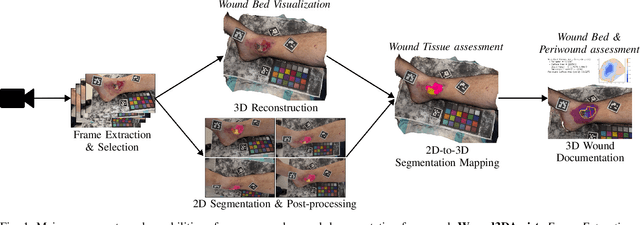
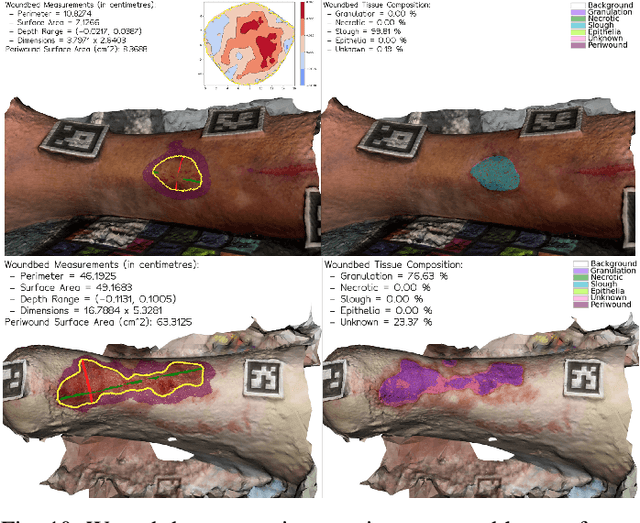
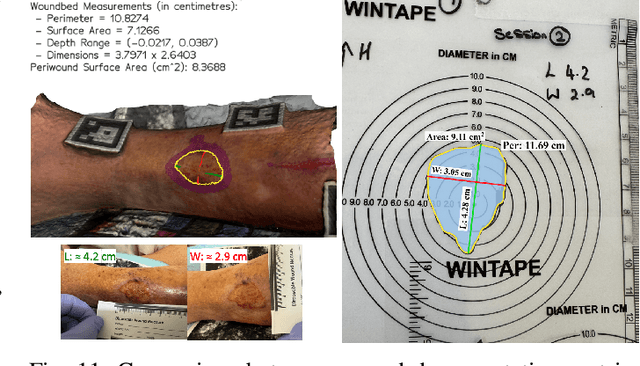
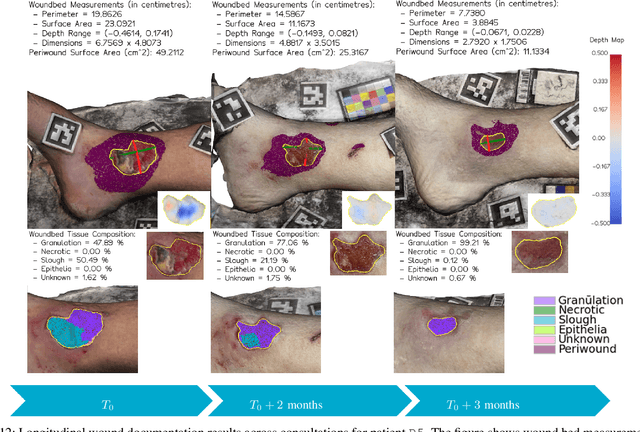
Abstract:Managing chronic wounds remains a major healthcare challenge, with clinical assessment often relying on subjective and time-consuming manual documentation methods. Although 2D digital videometry frameworks aided the measurement process, these approaches struggle with perspective distortion, a limited field of view, and an inability to capture wound depth, especially in anatomically complex or curved regions. To overcome these limitations, we present Wound3DAssist, a practical framework for 3D wound assessment using monocular consumer-grade videos. Our framework generates accurate 3D models from short handheld smartphone video recordings, enabling non-contact, automatic measurements that are view-independent and robust to camera motion. We integrate 3D reconstruction, wound segmentation, tissue classification, and periwound analysis into a modular workflow. We evaluate Wound3DAssist across digital models with known geometry, silicone phantoms, and real patients. Results show that the framework supports high-quality wound bed visualization, millimeter-level accuracy, and reliable tissue composition analysis. Full assessments are completed in under 20 minutes, demonstrating feasibility for real-world clinical use.
PINNs for Medical Image Analysis: A Survey
Aug 02, 2024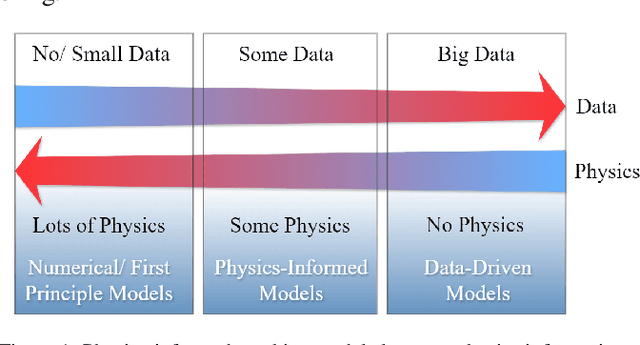

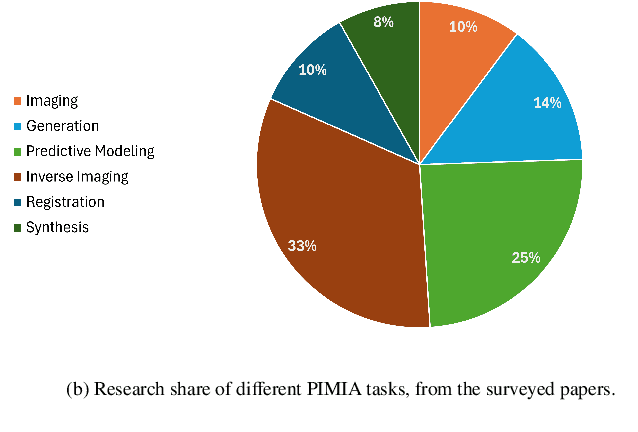

Abstract:The incorporation of physical information in machine learning frameworks is transforming medical image analysis (MIA). By integrating fundamental knowledge and governing physical laws, these models achieve enhanced robustness and interpretability. In this work, we explore the utility of physics-informed approaches for MIA (PIMIA) tasks such as registration, generation, classification, and reconstruction. We present a systematic literature review of over 80 papers on physics-informed methods dedicated to MIA. We propose a unified taxonomy to investigate what physics knowledge and processes are modelled, how they are represented, and the strategies to incorporate them into MIA models. We delve deep into a wide range of image analysis tasks, from imaging, generation, prediction, inverse imaging (super-resolution and reconstruction), registration, and image analysis (segmentation and classification). For each task, we thoroughly examine and present in a tabular format the central physics-guided operation, the region of interest (with respect to human anatomy), the corresponding imaging modality, the dataset used for model training, the deep network architecture employed, and the primary physical process, equation, or principle utilized. Additionally, we also introduce a novel metric to compare the performance of PIMIA methods across different tasks and datasets. Based on this review, we summarize and distil our perspectives on the challenges, open research questions, and directions for future research. We highlight key open challenges in PIMIA, including selecting suitable physics priors and establishing a standardized benchmarking platform.
SALVE: A 3D Reconstruction Benchmark of Wounds from Consumer-grade Videos
Jul 29, 2024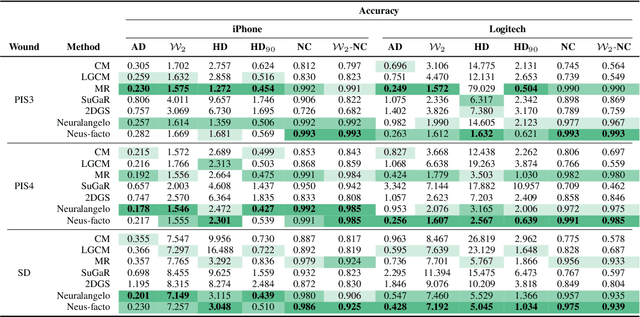
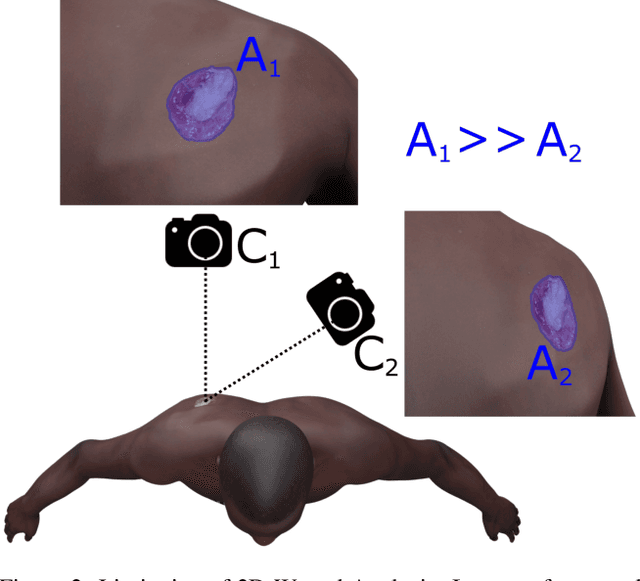

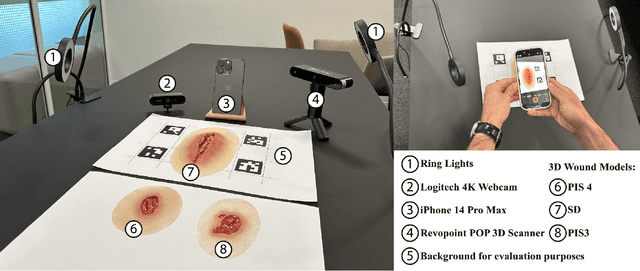
Abstract:Managing chronic wounds is a global challenge that can be alleviated by the adoption of automatic systems for clinical wound assessment from consumer-grade videos. While 2D image analysis approaches are insufficient for handling the 3D features of wounds, existing approaches utilizing 3D reconstruction methods have not been thoroughly evaluated. To address this gap, this paper presents a comprehensive study on 3D wound reconstruction from consumer-grade videos. Specifically, we introduce the SALVE dataset, comprising video recordings of realistic wound phantoms captured with different cameras. Using this dataset, we assess the accuracy and precision of state-of-the-art methods for 3D reconstruction, ranging from traditional photogrammetry pipelines to advanced neural rendering approaches. In our experiments, we observe that photogrammetry approaches do not provide smooth surfaces suitable for precise clinical measurements of wounds. Neural rendering approaches show promise in addressing this issue, advancing the use of this technology in wound care practices.
NeRF Director: Revisiting View Selection in Neural Volume Rendering
Jun 13, 2024Abstract:Neural Rendering representations have significantly contributed to the field of 3D computer vision. Given their potential, considerable efforts have been invested to improve their performance. Nonetheless, the essential question of selecting training views is yet to be thoroughly investigated. This key aspect plays a vital role in achieving high-quality results and aligns with the well-known tenet of deep learning: "garbage in, garbage out". In this paper, we first illustrate the importance of view selection by demonstrating how a simple rotation of the test views within the most pervasive NeRF dataset can lead to consequential shifts in the performance rankings of state-of-the-art techniques. To address this challenge, we introduce a unified framework for view selection methods and devise a thorough benchmark to assess its impact. Significant improvements can be achieved without leveraging error or uncertainty estimation but focusing on uniform view coverage of the reconstructed object, resulting in a training-free approach. Using this technique, we show that high-quality renderings can be achieved faster by using fewer views. We conduct extensive experiments on both synthetic datasets and realistic data to demonstrate the effectiveness of our proposed method compared with random, conventional error-based, and uncertainty-guided view selection.
Divide and Conquer: Rethinking the Training Paradigm of Neural Radiance Fields
Jan 29, 2024Abstract:Neural radiance fields (NeRFs) have exhibited potential in synthesizing high-fidelity views of 3D scenes but the standard training paradigm of NeRF presupposes an equal importance for each image in the training set. This assumption poses a significant challenge for rendering specific views presenting intricate geometries, thereby resulting in suboptimal performance. In this paper, we take a closer look at the implications of the current training paradigm and redesign this for more superior rendering quality by NeRFs. Dividing input views into multiple groups based on their visual similarities and training individual models on each of these groups enables each model to specialize on specific regions without sacrificing speed or efficiency. Subsequently, the knowledge of these specialized models is aggregated into a single entity via a teacher-student distillation paradigm, enabling spatial efficiency for online render-ing. Empirically, we evaluate our novel training framework on two publicly available datasets, namely NeRF synthetic and Tanks&Temples. Our evaluation demonstrates that our DaC training pipeline enhances the rendering quality of a state-of-the-art baseline model while exhibiting convergence to a superior minimum.
Syn3DWound: A Synthetic Dataset for 3D Wound Bed Analysis
Nov 27, 2023


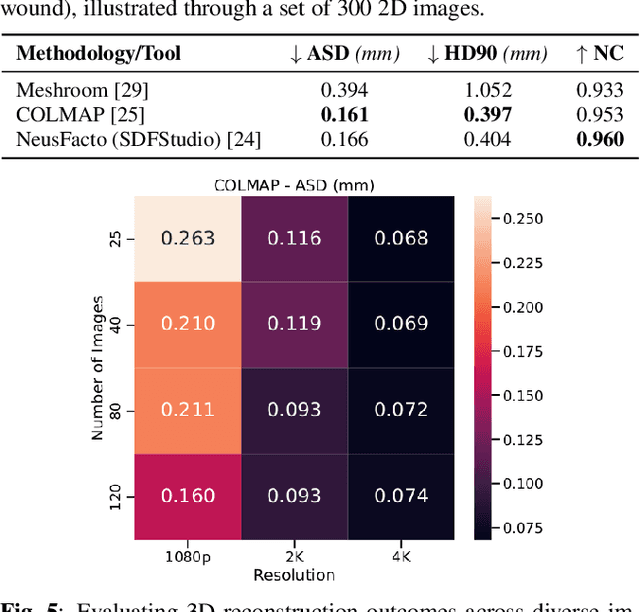
Abstract:Wound management poses a significant challenge, particularly for bedridden patients and the elderly. Accurate diagnostic and healing monitoring can significantly benefit from modern image analysis, providing accurate and precise measurements of wounds. Despite several existing techniques, the shortage of expansive and diverse training datasets remains a significant obstacle to constructing machine learning-based frameworks. This paper introduces Syn3DWound, an open-source dataset of high-fidelity simulated wounds with 2D and 3D annotations. We propose baseline methods and a benchmarking framework for automated 3D morphometry analysis and 2D/3D wound segmentation.
PADDLES: Phase-Amplitude Spectrum Disentangled Early Stopping for Learning with Noisy Labels
Dec 07, 2022



Abstract:Convolutional Neural Networks (CNNs) have demonstrated superiority in learning patterns, but are sensitive to label noises and may overfit noisy labels during training. The early stopping strategy averts updating CNNs during the early training phase and is widely employed in the presence of noisy labels. Motivated by biological findings that the amplitude spectrum (AS) and phase spectrum (PS) in the frequency domain play different roles in the animal's vision system, we observe that PS, which captures more semantic information, can increase the robustness of DNNs to label noise, more so than AS can. We thus propose early stops at different times for AS and PS by disentangling the features of some layer(s) into AS and PS using Discrete Fourier Transform (DFT) during training. Our proposed Phase-AmplituDe DisentangLed Early Stopping (PADDLES) method is shown to be effective on both synthetic and real-world label-noise datasets. PADDLES outperforms other early stopping methods and obtains state-of-the-art performance.
CorticalFlow$^{++}$: Boosting Cortical Surface Reconstruction Accuracy, Regularity, and Interoperability
Jun 14, 2022
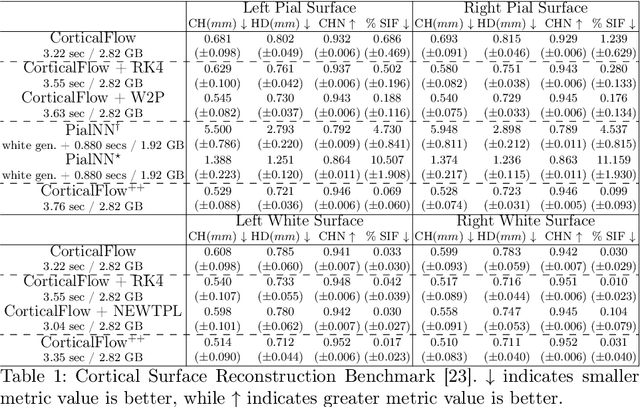
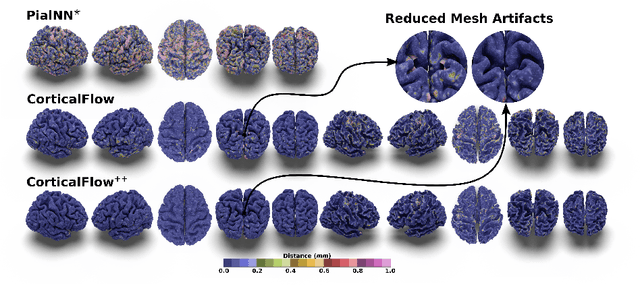

Abstract:The problem of Cortical Surface Reconstruction from magnetic resonance imaging has been traditionally addressed using lengthy pipelines of image processing techniques like FreeSurfer, CAT, or CIVET. These frameworks require very long runtimes deemed unfeasible for real-time applications and unpractical for large-scale studies. Recently, supervised deep learning approaches have been introduced to speed up this task cutting down the reconstruction time from hours to seconds. Using the state-of-the-art CorticalFlow model as a blueprint, this paper proposes three modifications to improve its accuracy and interoperability with existing surface analysis tools, while not sacrificing its fast inference time and low GPU memory consumption. First, we employ a more accurate ODE solver to reduce the diffeomorphic mapping approximation error. Second, we devise a routine to produce smoother template meshes avoiding mesh artifacts caused by sharp edges in CorticalFlow's convex-hull based template. Last, we recast pial surface prediction as the deformation of the predicted white surface leading to a one-to-one mapping between white and pial surface vertices. This mapping is essential to many existing surface analysis tools for cortical morphometry. We name the resulting method CorticalFlow$^{++}$. Using large-scale datasets, we demonstrate the proposed changes provide more geometric accuracy and surface regularity while keeping the reconstruction time and GPU memory requirements almost unchanged.
CorticalFlow: A Diffeomorphic Mesh Deformation Module for Cortical Surface Reconstruction
Jun 06, 2022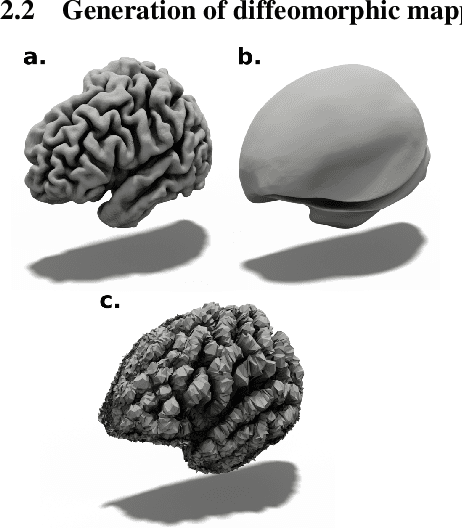
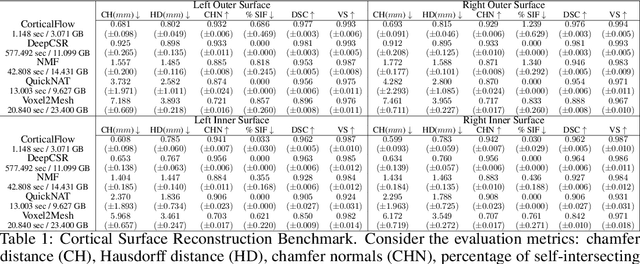

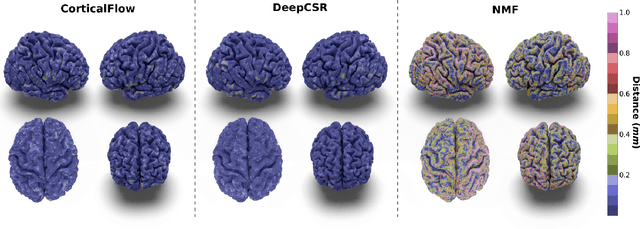
Abstract:In this paper we introduce CorticalFlow, a new geometric deep-learning model that, given a 3-dimensional image, learns to deform a reference template towards a targeted object. To conserve the template mesh's topological properties, we train our model over a set of diffeomorphic transformations. This new implementation of a flow Ordinary Differential Equation (ODE) framework benefits from a small GPU memory footprint, allowing the generation of surfaces with several hundred thousand vertices. To reduce topological errors introduced by its discrete resolution, we derive numeric conditions which improve the manifoldness of the predicted triangle mesh. To exhibit the utility of CorticalFlow, we demonstrate its performance for the challenging task of brain cortical surface reconstruction. In contrast to current state-of-the-art, CorticalFlow produces superior surfaces while reducing the computation time from nine and a half minutes to one second. More significantly, CorticalFlow enforces the generation of anatomically plausible surfaces; the absence of which has been a major impediment restricting the clinical relevance of such surface reconstruction methods.
Learning Dense Correspondence from Synthetic Environments
Mar 24, 2022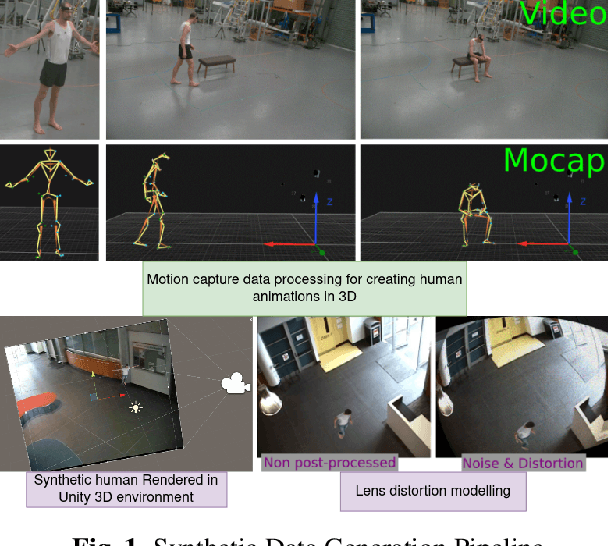

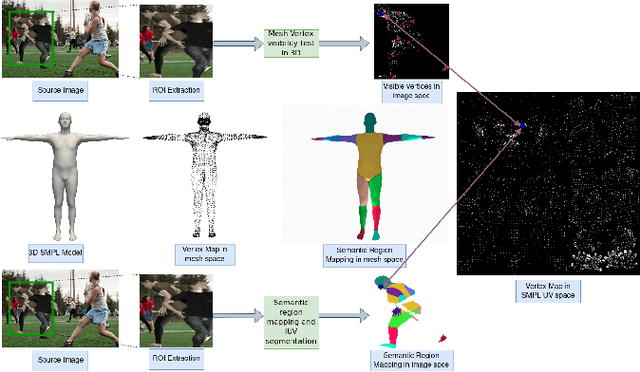

Abstract:Estimation of human shape and pose from a single image is a challenging task. It is an even more difficult problem to map the identified human shape onto a 3D human model. Existing methods map manually labelled human pixels in real 2D images onto the 3D surface, which is prone to human error, and the sparsity of available annotated data often leads to sub-optimal results. We propose to solve the problem of data scarcity by training 2D-3D human mapping algorithms using automatically generated synthetic data for which exact and dense 2D-3D correspondence is known. Such a learning strategy using synthetic environments has a high generalisation potential towards real-world data. Using different camera parameter variations, background and lighting settings, we created precise ground truth data that constitutes a wider distribution. We evaluate the performance of models trained on synthetic using the COCO dataset and validation framework. Results show that training 2D-3D mapping network models on synthetic data is a viable alternative to using real data.
 Add to Chrome
Add to Chrome Add to Firefox
Add to Firefox Add to Edge
Add to Edge